Crassula ovata
The hardy, spritely green, low-maintenance jade plant, Crassula ovata, is a consistent day-brightener.

We link to vendors to help you find relevant products. If you buy from one of our links, we may earn a commission.
It renews its appeal as it moves through its different growing stages, starting with tiny rooted leaves or stems, moving to young green specimens with thick, oval leaves, and gradually growing into a woody, treelike form with brown “trunks” topped with leafy branches.
I’ll share some lore and tips about this popular houseplant here, and I hope you’ll grow to love it the way I do.
Here’s what I’ll cover:
What You’ll Learn
Cultivation and History
Sometimes called friendship or money plant, C. ovata is native to South Africa and is a member of the large crassula genus.
It shouldn’t be confused with the numerous other plants with the word “jade” in their name.
Just a few examples include jade necklace (C. marnieriana), a tightly stacked crassula with tiny leaves, or white jade pineapple (Ananas comosus), which shares the the reference to jade but is a spiky pineapple plant with little in common with C. ovata otherwise.
While some of the similarly named succulents do share most of the same growing requirements as C. ovata, it does have a few unique characteristics that add extra appeal.
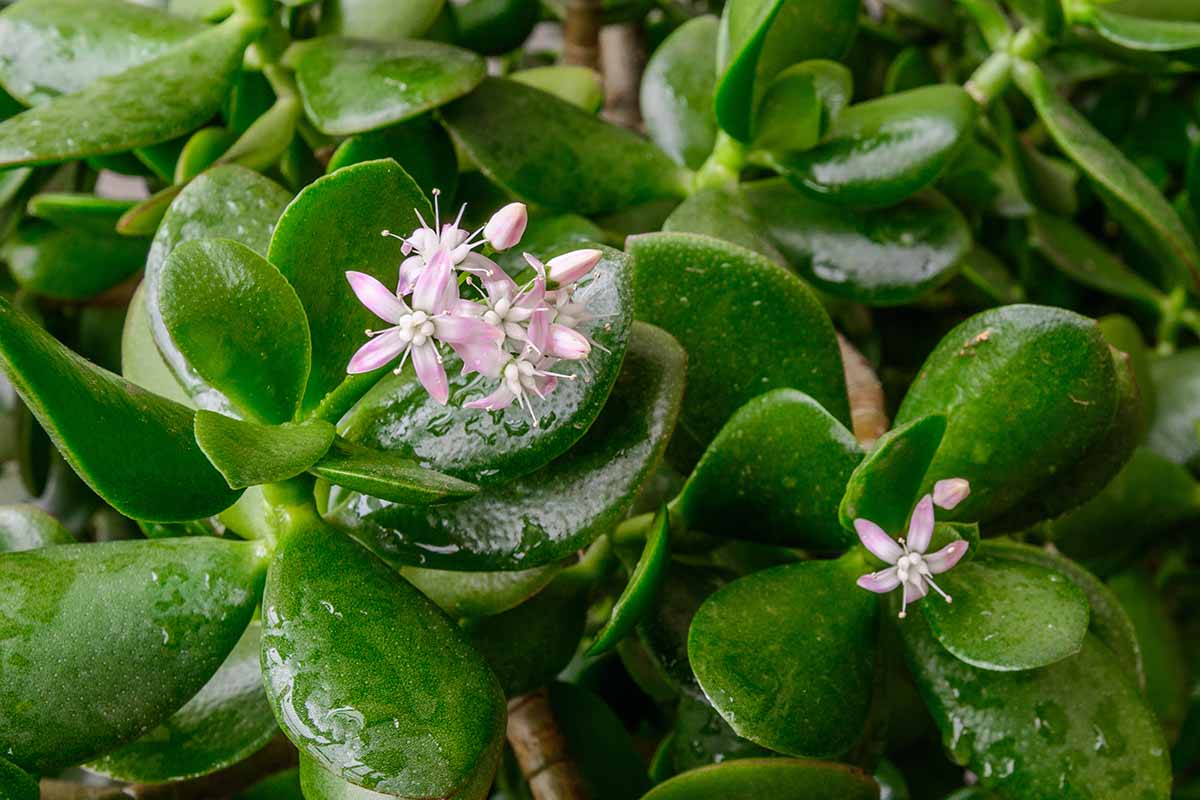
It is ideal for bonsai, for example, and also grows stems that turn brown as it gets older, making it look more like a wise little tree than an easy-care houseplant.
A camel-like succulent, C. ovata stores water in its leaves and requires minimal care to thrive, little more than infrequent watering and bright light.
Grown outdoors, these succulents may burst into bloom in late fall, showcasing clusters of small flowers in white or pink. Flowering is rare indoors.
Most of us will be growing C. ovata in the house, though, at least for part of the year. And while we may not get that riot of beautiful flowers, we will have lovely green foliage, often tinged with red with enough light exposure.
Here’s how to keep your houseplant happy from start to maturity when grown indoors.
Propagation
Jade is one of the plants that gives succulents their “easy to root” reputation.
You can quickly propagate a new specimen from a cutting or an individual leaf.
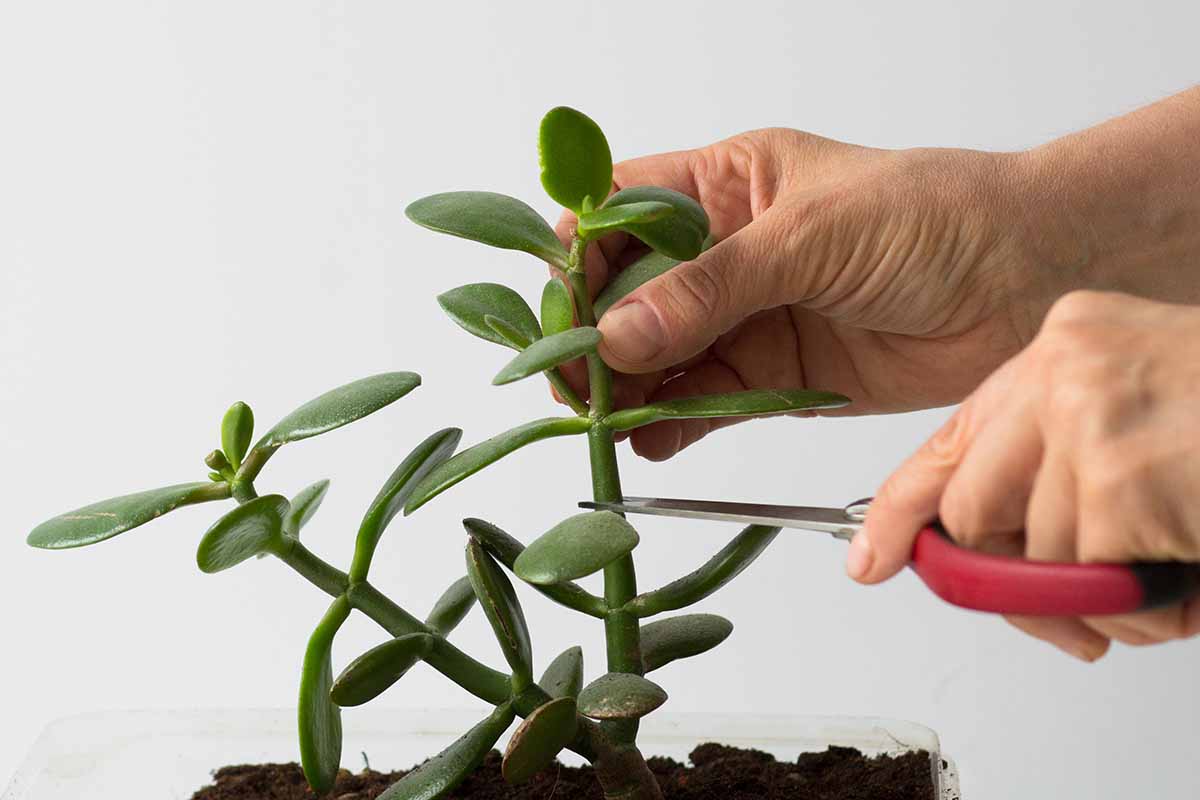
Learn more about both of these methods in our guide to propagating succulents.
If you notice your pot actually contains two or more plants that are entwined and growing together, resist the urge to pry them apart in the hope of propagating more.
Dividing can harm or even kill the codependent plants, since the roots are usually so intermixed that you can’t separate them and still leave ample roots attached to support each of them.
If you want to propagate more plants, root cuttings instead. Taking a few snips here and there doesn’t harm the specimen at all, and a little haircut may prompt fuller, stronger growth.
Find more tips on jade plant propagation here.
How to Grow
As long as you provide ample light and occasional water, you can mostly leave your jade alone to grow on its own.
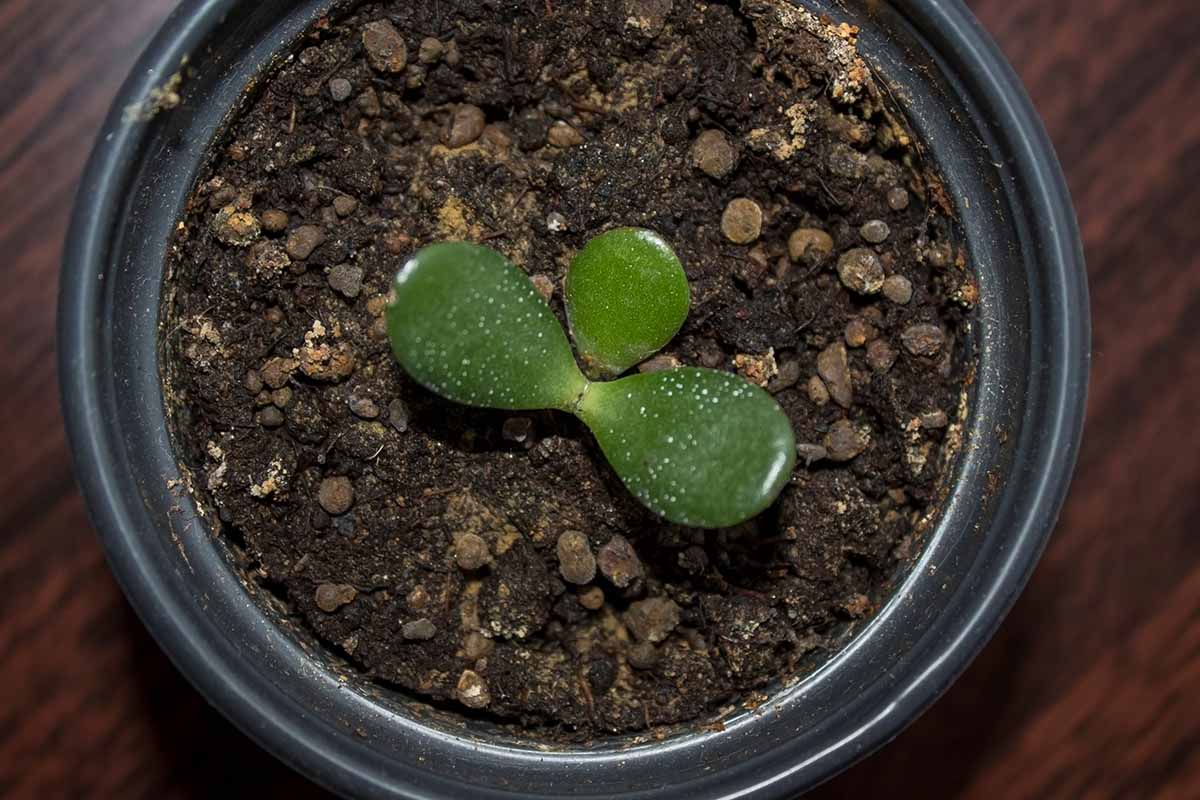
Start by assuring optimal growing conditions. Here’s what you should cover:
Temperature
These succulents can only be grown outdoors in Zones 11 and 12. If you live there, you can grow C. ovata as part of a border or xeriscape, planting it right in the ground.
We cover cultivating jade outdoors in a separate guide. (coming soon!)

Folks who live elsewhere can grow C. ovata in containers indoors.
It’s also possible to let them grow outside when the temperatures are reliably above freezing and then bring the containers indoors when nighttime temperatures start dipping below about 50°F.
It pays to be strict about bringing jade indoors ahead of cooler weather. While established specimens can often survive a light frost, they just as often languish, so why risk it?
Indoors, this plant grows best in temperatures from 55 to 75°F, so it can thrive in most households.
Containers
While many attractive pots are made of ceramic and finished in colors that will set off the beautiful green of the leaves, be careful when selecting a container for your specimen.
It needs a pot with drainage holes and a saucer to catch the excess water beneath it, so you can discard the excess after watering.
If you do opt for an appealing ceramic, metal, or porcelain pot that doesn’t feature drainage holes, make sure to place a second pot and saucer inside it that drains readily.
Also, make sure the pot isn’t too big. Jade grows fairly slowly, and does best in pots that are just an inch or two wider than the root zone of the plant.
Soil
No peat for jade plants, please. These succulents must have well-draining soil, and any potting mix that contains peat will retain too much moisture.

While the capacity to hold onto water longer is ideal for, say, container-grown vegetables, it can make the soil too soggy.
Instead, look for a well-draining soil mix. Specialty cacti and succulent blends are perfect for C. ovata.
We have tips on blending your own potting mixes for succulents here.
Light
A sunny windowsill where plants will receive about four hours of direct sun per day is best, but you can also grow jade in rooms that get at least six hours a day of bright, indirect light.
Low light conditions may cause weak, leggy growth.
Watering
This succulent has low water needs but requires a full drenching when you give it supplemental water.
Be sure the soil is dry at least a couple of inches below the surface before you water, using a soil moisture meter or your finger.
Give it a good soak, watering the soil rather than sprinkling the foliage, until it runs through the drainage hole.
Stick around long enough to make sure the water drains completely and then discard the excess, so the plant isn’t standing in it. Too much moisture can encourage root rot, which is deadly for Crassula species.
Growing Tips
- Grow in cacti and succulent potting mix.
- Don’t water until the soil has had a chance to dry out.
- Be sure to move outdoor pots indoors for the winter when temperatures dip below 50°F.
Pruning and Maintenance
There’s not much to keeping jade plants growing and thriving once they’re established.
Taller specimens might benefit from trimming the top couple of inches from the stems. This will help the plant stay compact and look full, but pruning isn’t necessary for it to thrive.
You can count on the plant to drop its lower leaves as it becomes taller and the stems start to turn brown. Those in the nursery business call this trait “self pruning,” and it’s just one of the many characteristics that make jade so easy to care for.
Get more tips on pruning here.
You should only need to repot every four or five years, and only if the plant is root bound. The best time for this is spring or summer.
The new pot should be no more than a couple of inches wider than the previous container.
Never move jade to a new pot if it’s still in its first growing season. The roots need to become established first.
Where to Buy
Most jade plants that are readily available will just be sold as “jade” or the species name.
Keep in mind that jade was formerly classified as C. argentea, C. portulaca, and C. obliqua, and you may still find plants being sold with these botanical names.
Remember that the younger specimens will have green stems that you can expect to turn brown later as they get a bit older and taller.
Four-inch pots of jade are available from Florida House Plants LLC via Walmart.
Named cultivars are more rare, but not impossible to find.
You might like ‘Crosby’s Compact’ dwarf jade, for example. While it still branches, this type grows just six inches tall, with red-edged leaves on thick stems.

‘Crosby’s Compact’ is available in four-inch pots from Exotic Houseplants via Amazon.
Managing Pests and Disease
Jade plants do have a few potential enemies, but these low-maintenance houseplants usually don’t incur insect pest infestations or infections.
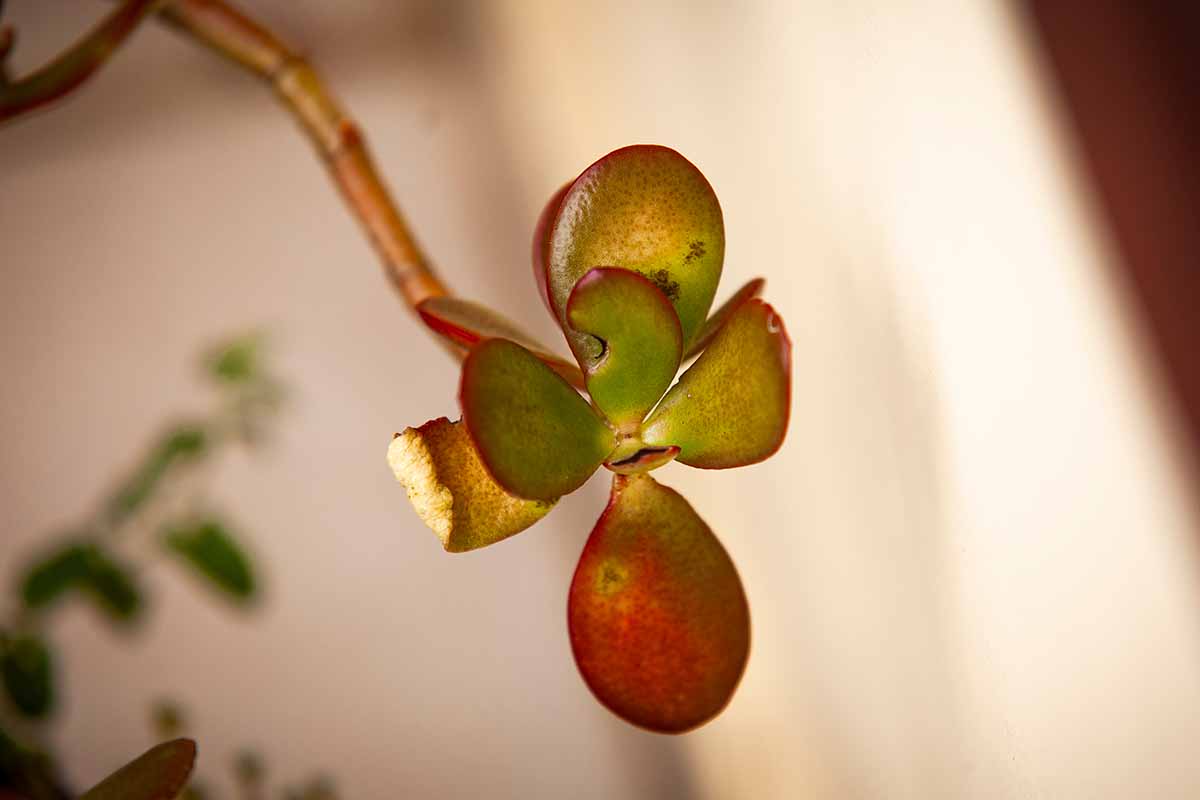
You should still watch out for mealybugs, scale, and spider mites, though. Look for more ways to detect and prevent those bugs in our jade plant pest guide.
Root rot from overwatering or poor drainage is the disease you should do your best to avoid when growing jade. Limp leaves may be an indicator of root rot.
And try to prevent powdery mildew as well. This condition is caused by Erysiphe fungi and mostly occurs when the plants are growing somewhere too humid.
If you spot this ailment, which looks like someone dusted white powder on the foliage, check out our guide to remedies for powdery mildew.
Best Uses
Jade is the optimal choice if you’re looking for a plant to grow in a sunny windowsill, especially in a home with dry heat. It’s the go-to for indoor gardeners with low humidity.
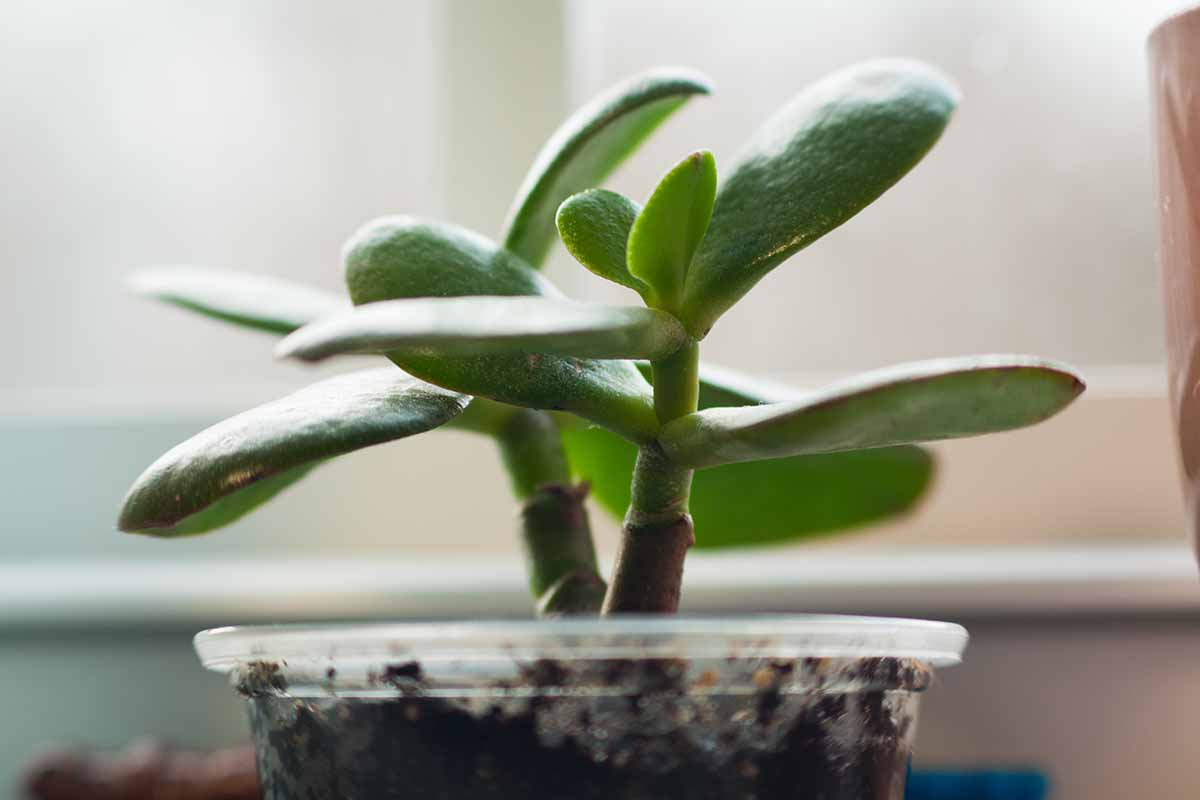
These tall, branching succulents make a good focal point for dish gardens, or they can be used to add some height to a basket that also contains a trailing succulent.
Many folks also favor the dwarf varieties to use as bonsai. With their mature brown stems, they look like little trees, but are far less fussy than many bonsai options.
Quick Reference Growing Guide
| Plant Type: | Succulent | Flower / Foliage Color: | Pink, white/green or green with red edges |
| Native to: | South Africa | Maintenance | Low |
| Hardiness (USDA Zone): | 11-12 | Tolerance: | Drought, poor soil, light shade |
| Bloom Time: | Late fall | Soil Type: | Sandy loam; succulent growing mix |
| Exposure: | Full sun, partial shade (outdoors); bright, indirect light (indoors) | Soil pH: | 6.5-7.5 |
| Time to Maturity: | Up to 5 years | Soil Drainage: | Well-draining |
| Planting Depth: | Surface of soil (transplants or plantlets) | Uses: | Beds, borders, containers, houseplants, rock gardens, xeriscaping |
| Height: | 3-6 feet (outdoors), 18-30 inches (indoors) | Order: | Saxifragales |
| Spread: | Up to 30 inches | Family: | Crassulaceae |
| Water Needs: | Low | Genus: | Crassula |
| Common Pests and Diseases: | Mealybugs, scale, spider mites: Leaf spot, powdery mildew, root rot | Species: | Ovata |
This Succulent Has It Made
With a plant that asks for so little in terms of watering or maintenance, I think it’s only fair to make sure you give your jade what it needs to thrive: bright light.
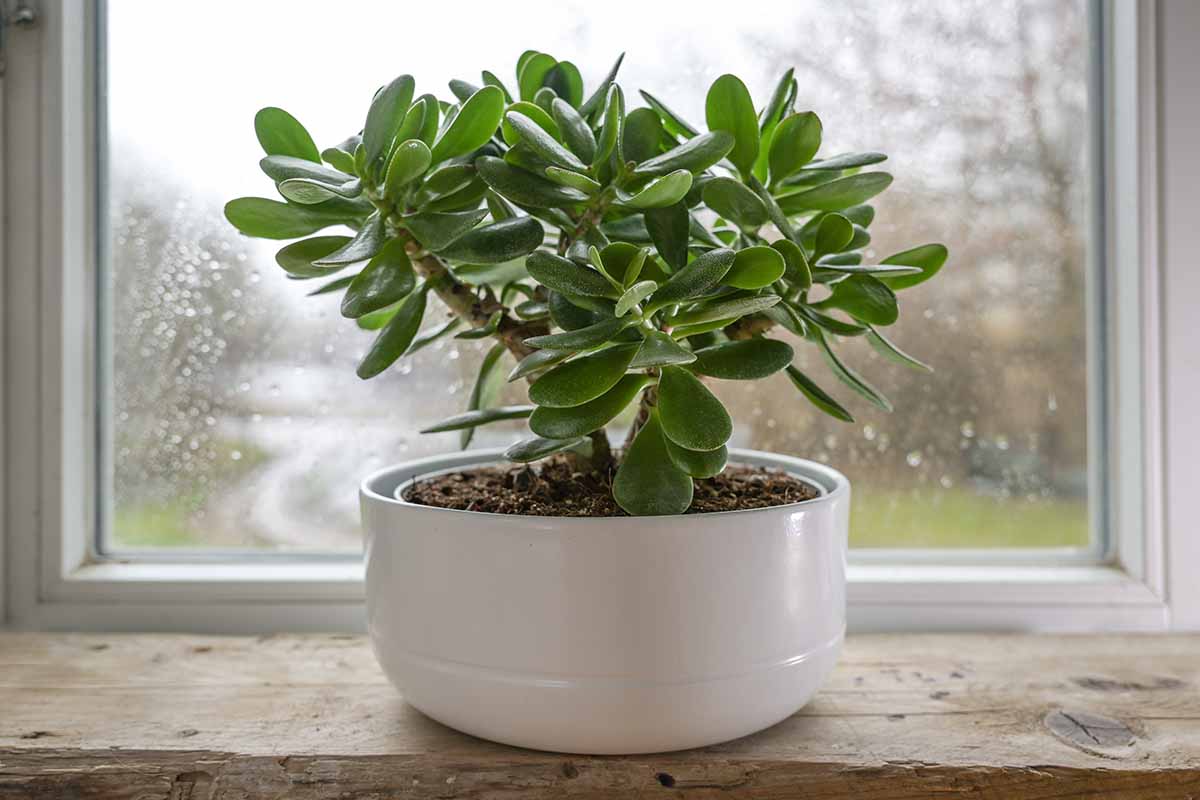
With that out of the way, you can enjoy this plant for years to come. You may want to use some of the time you save with tending this easy-care succulent by starting some cuttings so your friends can grow jade, too.
If you’re already a fan, or still have some questions, kindly add your input to the comments section below.
Of course, jade is just one of many possibilities when choosing succulents to grow and care for. Discover these varieties next:
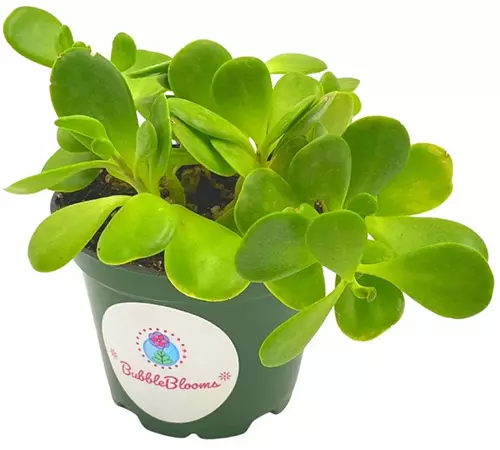

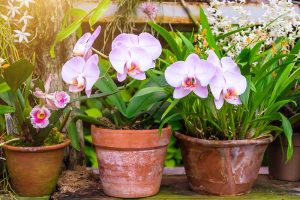

Thank you so much. All the info about the jade plant will be so helpful as I am just starting to grow a couple. With your guide I can ensure a beautiful plant!!!
Thank you for reading, Luna, and good luck with your jades!
I have a large aged Jade that I have to repot. I moved to Florida and thought it was a good idea to put it outside! Humidity got exceptionally high and too much rain. Brought plant inside to regroup. Finally it is getting better but had to cut off several limbs. Going to have to repot to see if there is some root rot. What are my options for saving it???
Hello Sue, I’m glad you asked. I imagine too much rain and humidity may have harmed the plant. The first thing I would do is make sure any excess water has drained and the jade isn’t in soggy soil. Next, I would take a couple of cuttings to root, even if they’re just individual leaves. That way you can probably hold on to at least part of your beloved plant. You can find instructions for jade propagation in our guide. Also, before taking the plant out of its pot, sniff the drainage holes at the bottom. If they smell at… Read more »